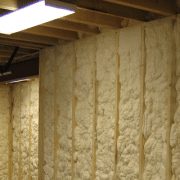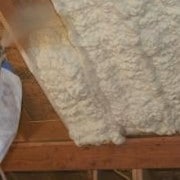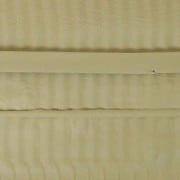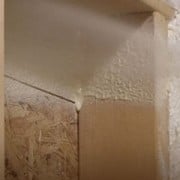Different Types of Insulation
[ad_1]
Insulation helps in energy conservation, which keeps your house warm during winters and cool during summers. This helps in saving money on energy bill as there the place is airtight and needs less power to keep it cool or warm. Apart from offering heat insulation, these also offer sound insulation which helps in reducing the sound transmission from one room to another or from outside to inside and vice versa. There are different types of insulation available in the market, such as fiber glass, cellulose and foam insulation, which have different R-value. Moreover, these insulation material also differ in thickness and density. The most commonly used insulation, found in residential and commercial buildings, are blanket insulation, loose-fill insulation, rigid board insulation and spray foam insulation.
The loose fill insulation is made up of loose fibers and fiber pellets, which fill in the cavities or attics using special machines. Although these are expensive, it is also efficient as it completely insulates the thing and makes it airtight. There are two types of loose-fill insulation, namely cellulose as well as fiberglass and rockwool mixture. Green insulation, cellulose is composed of recycled newspaper which can be chemically treated to make it fire resistant. In contrast, the fiberglass and rockwool mixture uses the blow-in blanket system which offers full coverage and better insulation.
On the other hand, the blanket insulation is made from mineral fibers and are available in blanket rolls of varying widths. These are generally used to insulate floor, ceilings as well as walls, and are installed between wooden frames and rafters. These are most affordable type of insulation, however it requires utmost precision and care, while installing, for it to be effective.
In contrast, the high quality rigid board insulation is made from fiber glass, polystyrene or polyurethane and is available in varying thickness. It is generally used in cathedral ceilings, concrete slab edges and for reproofing of the basement walls and flat roofs. The only precaution that needs to be considered while installing it internally, is that should be covered in accordance with the building codes and fire safety measures. In case you install it externally, then it must be covered with weatherproof facing.
The spray foam is composed of two liquids, namely a polymer agent and a foaming agent, which are sprayed into cavities to make things airtight. On application, the liquid form expands and turn into solid plastic, comprising countless air-filled cells. These are expensive than other forms of insulation, but it is also easy to install and can be done without professional help.
Hence, depending upon your home’s requirement you may use Foam Insulation, fiberglass insulation or any other type of insulation, which not only conserves energy but also offers Sound Insulation. As a responsible citizen, it is advisable that you use Green Insulation, such as cellulose which is environment friendly.
[ad_2]








